How to Improve Personal Sound Amplification Product (PSAP) Performance and Efficiency
Contributed By DigiKey's North American Editors
2022-10-28
Personal sound amplification products (PSAPs) provide a low-cost way to address the need for minimal hearing amplification for sports and hearing loss. Though these smart adjustable hearables are increasingly popular, they continually challenge designers to improve performance while keeping cost and power consumption to a minimum.
The challenges stem from the need to reduce problematic ambient leakage and bone conduction signals in the hearing canal, while also accounting for delays due to the hearing device's electronics. These electronics include microphones, a speaker, a DSP, and a codec. Combining the gain and latency signals from the electronics with the ambient and bone-conducted audio creates a comb effect that needs to be understood. Only then can it be mitigated effectively to implement a cost-effective, power-efficient design.
This article describes PSAP construction, operation, typical design requirements, and key technical concepts such as the comb effect. It then introduces a low-power, high-performance audio codec from Analog Devices/Maxim Integrated for use in PSAPs that can be used to address the comb effect, and shows how to apply it.
PSAP operation and design requirements
With age, it is often harder to hear the radio, television, or a conversation. Sometimes background noise interferes with hearing a restaurant or social gathering discussion. Solutions to hearing problems to date have relied upon expensive hearing aid options that are classified and regulated as medical devices. Regardless of the individual user's degree of hearing loss, these devices are considerably more costly than unregulated PSAP hearables.
Rechargeable PSAPs, intended for recreational or low-level hearing enhancement, have customizable low-level amplification to help users hear with clarity by decreasing or increasing the mid-to-high frequencies. The amplifier typically has amplification resets and noise-canceling circuitry to reduce feedback and background noise (Figure 1).
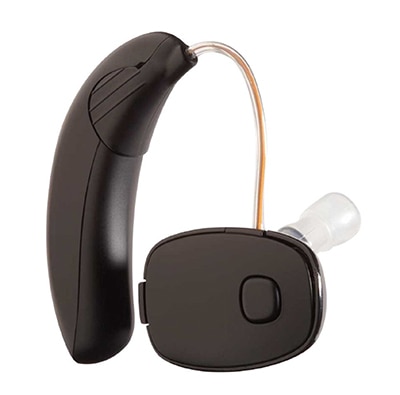 Figure 1: PSAPs such as the C350+ have customizable low-level amplification to improve clarity. (Image source: Health Products for You (HPFY))
Figure 1: PSAPs such as the C350+ have customizable low-level amplification to improve clarity. (Image source: Health Products for You (HPFY))
The frequency range of each device depends on the primary application, such as voice versus music. For voice, the operating frequency range is from 20 Hertz (Hz) to 8 kilohertz (kHz), while music ranges to the audible maximum of 20 kHz. Most PSAP devices have battery power and PC software for customizable amplification across the frequency range. These devices are also designed to deliver excellent sound quality and speech intelligibility for the sounds around the user, from their phone, and for audio streaming.
A typical audio PSAP system includes an audio codec and DSP core. A simplified view of this PSAP audio system has an audio codec with a microphone input to an analog-to-digital converter (ADC). The audio codec decimates the ADC’s digital output in preparation for the digital transmission to the Bluetooth system-on-chip (SoC)/DSP core (Figure 2).
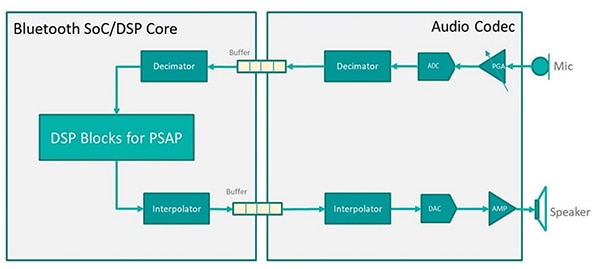 Figure 2: A typical audio system for a PSAP comprises a microphone, ADC, decimator, Bluetooth/DSP core, interpolator, digital-to-analog converter (DAC), amplifier, and speaker. (Image source: Maxim Integrated, modified by Bonnie Baker)
Figure 2: A typical audio system for a PSAP comprises a microphone, ADC, decimator, Bluetooth/DSP core, interpolator, digital-to-analog converter (DAC), amplifier, and speaker. (Image source: Maxim Integrated, modified by Bonnie Baker)
The Bluetooth SoC/DSP core further decimates the signal in preparation for the DSP block. The DSP block processes the signal, interpolates, and then sends the digital signal back to the audio codec. The audio codec converts the digital signal back to analog to drive the speaker output.
The enabled PSAP has two types of sounds that reach the user's eardrum. S1 is the summation of the residual user's voice ambient leakage (S1A) and the bone conduction (S1B). For S1, the hearable device obscures the ear opening to block the sound from reaching inside and escaping outside the ear canal (Figure 3).
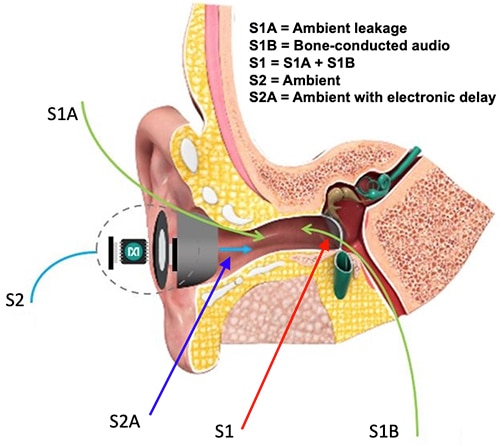 Figure 3: Three sources of sound reach the eardrum with a PSAP; ambient leakage (S1A), bone-conducted (S1B), and the processed ambient sound (S2A). (Image source: Maxim Integrated, modified by Bonnie Baker)
Figure 3: Three sources of sound reach the eardrum with a PSAP; ambient leakage (S1A), bone-conducted (S1B), and the processed ambient sound (S2A). (Image source: Maxim Integrated, modified by Bonnie Baker)
The PSAP’s microphone captures the ambient sound (S2), the DSP processes it, and the output signal (S2A) is sent into the ear canal via the audio transducer. Importantly, the audio processing chain design creates a delay. These three sounds sum up the user's eardrum to create the PSAP experience.
The PSAP comb effect
For the PSAP experience, the audio system requires the addition of all sounds before they hit the eardrum. The time of arrival of S1A and S1B to the user’s eardrum is identical, but as shown, the S2 signal travels through the audio system, creating a slight delay. If the delay and gain are not adequately adjusted, an echo effect occurs when the sources are added together (Figure 4).
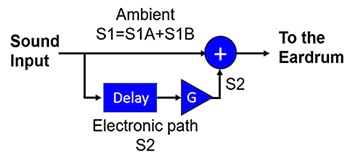 Figure 4: Signal model for the summation of the three sounds: S1A, S1B, and S2. (Image source: Bonnie Baker)
Figure 4: Signal model for the summation of the three sounds: S1A, S1B, and S2. (Image source: Bonnie Baker)
The variables in Figure 4 are delay and gain (G). The S1 signal goes directly to the eardrum. By adding the ambient S1 sound to the electronic S2 path, the gain function in S2 creates a delay. The addition of S1 and S2 has the potential to create an echo, but this can be minimized by manipulating the delay time and gain magnitude.
Figure 5 shows the resulting signal response for a delay equaling 0.4 milliseconds (ms) and 3 ms, and G equaling 0 decibels (dB), 15 dB, and 30 dB.
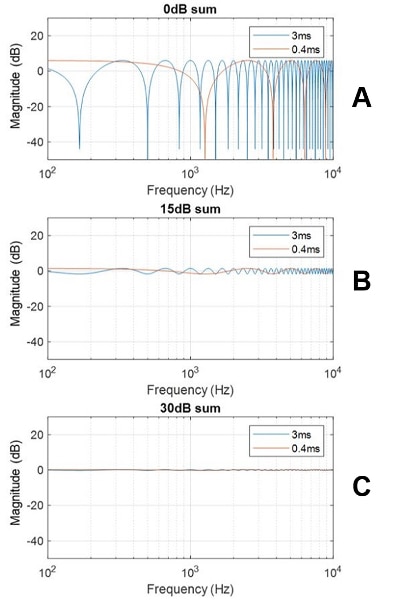 Figure 5: The summation frequency response of two sounds based on the signal model, with delay changes from 0.4 ms to 3 ms and gain changes of 0 dB, 15 dB, and 30 dB. (Image source: Maxim Integrated, with modifications by Bonnie Baker)
Figure 5: The summation frequency response of two sounds based on the signal model, with delay changes from 0.4 ms to 3 ms and gain changes of 0 dB, 15 dB, and 30 dB. (Image source: Maxim Integrated, with modifications by Bonnie Baker)
The normalized frequency responses in Figure 5 illustrate the delay and gain effect on the eardrum. There is a distortion, or comb effect, in the form of multiple notches for G equaling 0 dB. The comb effect might degrade the sound quality through reverberation or echo. In Figure 5A, a 3 ms delay creates more notches at a much lower frequency.
With the increased gain in Figure 5B, the comb effect reduces in significance. The gain change from 0 dB to 15 dB forms a ~3 dB ripple at 15 dB gain. There is almost a flat response for both delays at a 30 dB gain in Figure 5C.
How to mitigate the comb effect
As described, an increase in gain and a decrease in delay reduces the comb effect in a conventional PSAP system to reduce its reverberation or echo. An advanced PSAP device replaces the delay/gain components with an additional low-latency digital filter that is used to perform an anti-noise function (Figure 6).
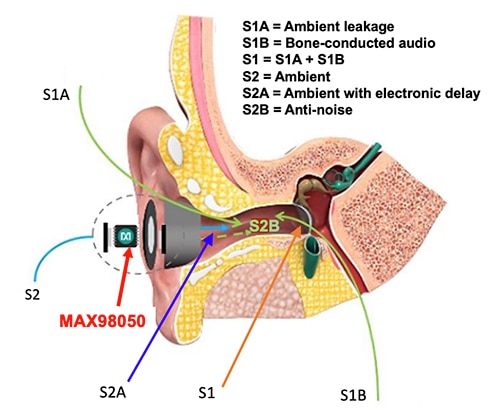 Figure 6: Four sounds reach the eardrum in an advanced PSAP system: S1A, S1B, S2A, and S2B. (Image source: Maxim Integrated, modified by Bonnie Baker)
Figure 6: Four sounds reach the eardrum in an advanced PSAP system: S1A, S1B, S2A, and S2B. (Image source: Maxim Integrated, modified by Bonnie Baker)
In Figure 6, the MAX98050 low-power, high-performance audio codec generates anti-noise (S2B) that interacts with the original passive ambient sound to form a new sound. The MAX98050 has noise cancellation and voice/ambient enhancement features that rely upon a low-power, low-latency digital filter that ensures S2B reduces noise at low frequencies.
Figure 7 shows a simplified block diagram based on the MAX98050 PSAP solution.
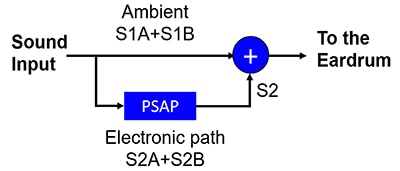 Figure 7: The MAX98050 codec creates the PSAP signal interface to vary gain, and reduce noise and delay. (Image source: Bonnie Baker)
Figure 7: The MAX98050 codec creates the PSAP signal interface to vary gain, and reduce noise and delay. (Image source: Bonnie Baker)
A simulation based on the Figure 7 block diagram illustrates the comb effect of the MAX98050 system, and the impact of gain and delay time on the noise (Figure 8).
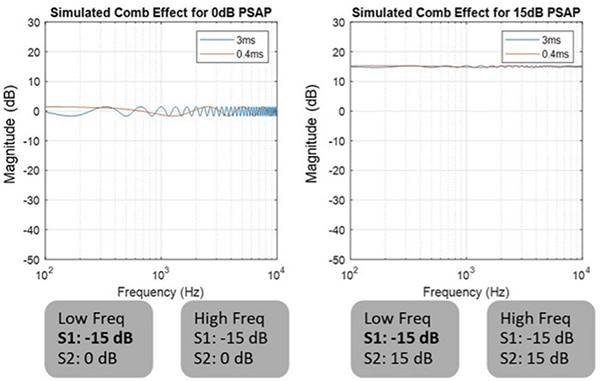 Figure 8: A simulation of the diagram in Figure 7 shows the comb effect of the MAX98050 and the impact of gain and delay time on the noise. (Image source: Maxim Integrated)
Figure 8: A simulation of the diagram in Figure 7 shows the comb effect of the MAX98050 and the impact of gain and delay time on the noise. (Image source: Maxim Integrated)
Figure 8 shows that Maxim's anti-noise solution emphasizes the gain difference between S1 and S2. In addition to the simulation, measurements based on the real form factor and real-time evaluation system validate the proposed anti-noise solution.
Note that reduction of the delay in audio systems requires relatively high ADC and DAC sampling rates. These changes increase the computation load and reduce power efficiency. Overall, there is degradation in the audio performance.
Conclusion
PSAPs provide clear, cost-effective benefits to anyone looking to enhance their hearing abilities. For designers, the challenge to improve efficiency and performance continues, which requires dealing more effectively with the comb effect. As shown, using the low-power, always-active MAX98050 codec from Maxim Integrated, designers can mitigate the PSAP comb effect, leading to improved audio and power performance and flexible system design for next-generation PSAPs.

Disclaimer: The opinions, beliefs, and viewpoints expressed by the various authors and/or forum participants on this website do not necessarily reflect the opinions, beliefs, and viewpoints of DigiKey or official policies of DigiKey.








